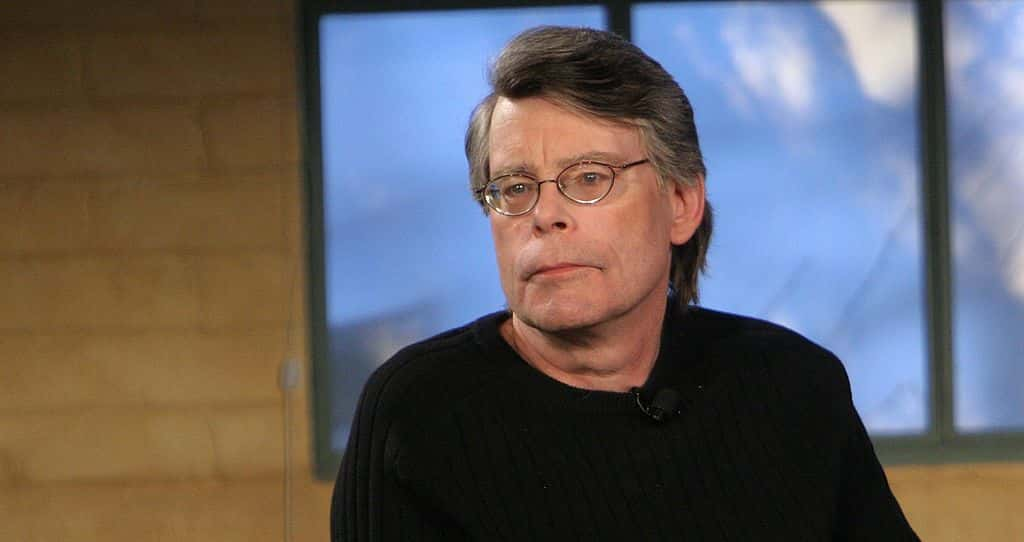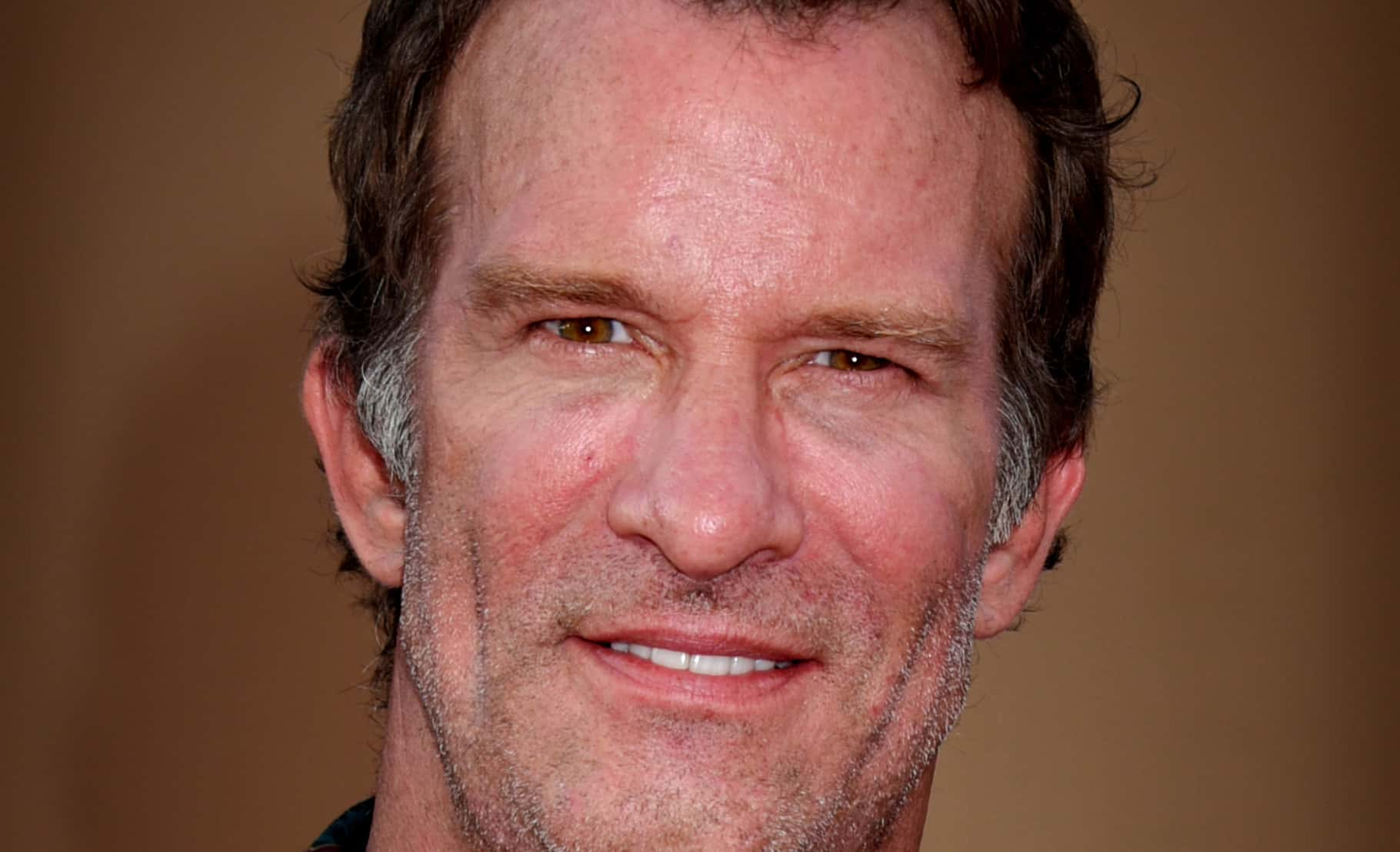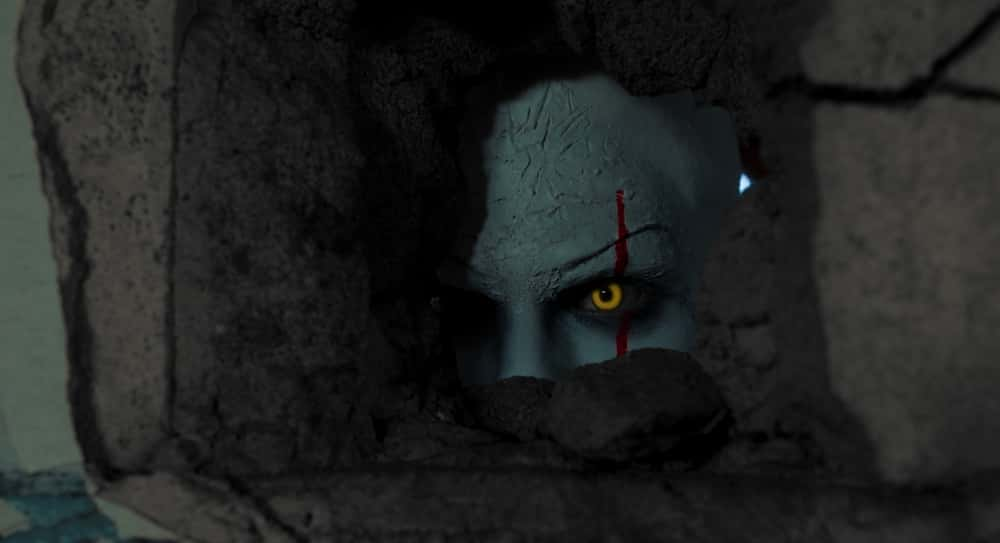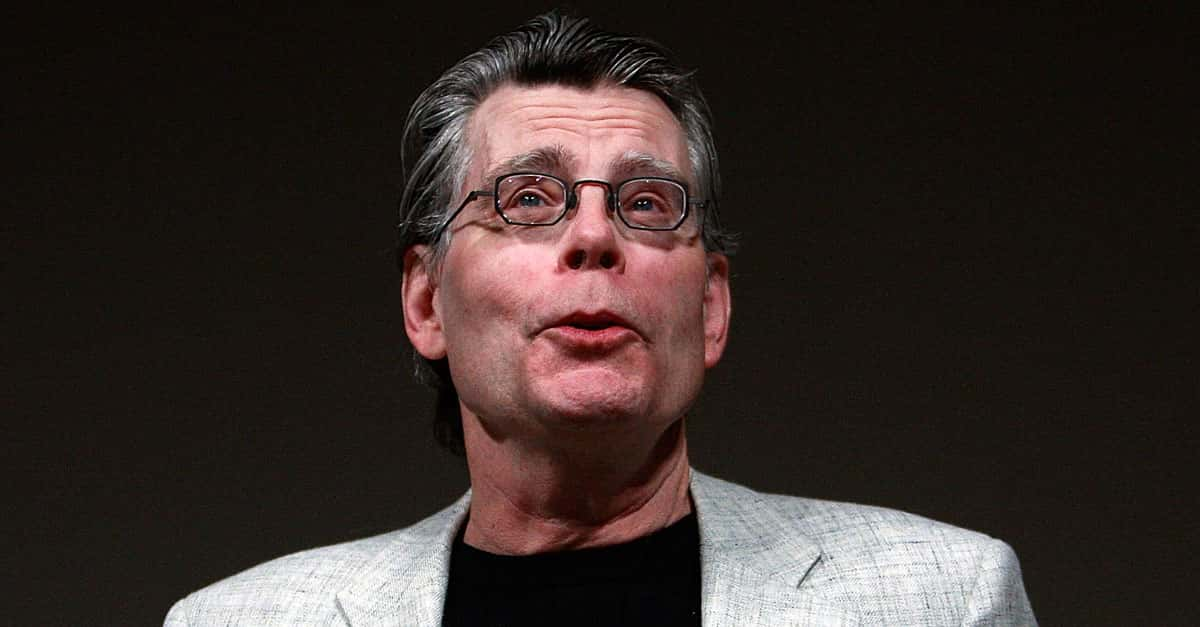“There are books full of great writing that don’t have very good stories. Read sometimes for the story… don’t be like the book-snobs who won’t do that. Read sometimes for the words—the language. Don’t be like the play-it-safers who won’t do that. But when you find a book that has both a good story and good words, treasure that book".
Bone-chillers, spine-tinglers, hair-raisers: Stephen King is the master of his craft. He has written over fifty novels and eleven short story collections over his decorated career. Many of his books have been turned into huge blockbuster films and they continue to bring in audiences. He’s a savvy user of Twitter and someone who keeps a pulse on pop culture. His books, and their screen adaptations, often share a universe, which means his stories are always full of references and clues to other works. So what else is there to know? Read on for 26 facts about the works and adaptations of the Master of Horror himself, Stephen King.
1. Pre-Production Of The Living Unlife
King and horror-legend George A. Romero were mutual fans. Romero was twice slated to direct adaptations of King’s works but both times it fell through due to scheduling conflicts. The director of The Night of the Living Undead was initially set to direct a 10-hour miniseries version of It, followed by an assignment to direct Pet Sematary.

2. What A Web We Weave
King is a major fan of the Star Wars series and even visited the set of The Empire Strikes Back because it was being filmed in the same studio as The Shining. In the book It, Mrs. Kersh is named after the director of The Empire Strikes Back, Irvin Kershner. The film's writer, Lawrence Kasdan, later went on to direct another King adaptation, Dreamcatcher.
3. Raking In The Dough
Stephen King’s novels and short stories have been great fodder for filmmakers for decades now, but some have been more successful than others. For years, The Green Mile, starring Tom Hanks and Michael Clarke Duncan, sat at the top of the list of highest grossing Stephen King movies, but it was recently been eclipsed by the new adaptation of It, which has grossed $700 million.
4. A Flop By Any Other Name
A few movies based on Stephen King novellas and novels have attracted the scorn of critics and moviegoers alike. Two Stephen King-based movies have received less than one million at the box office. These, erm, accolades are awarded to The Night Flier and Riding the Projectile. They made $237,700 and $192,900 respectively.
 Shutterstock
Shutterstock
5. Origin Stories
Stephen King’s first story to ever be professionally published was in a collection called Startling Mystery Stories and it appeared in 1967 when he was 20 years old. The story was called “The Glass Floor".
6. Big Break
The novel Carrie, in which a telekinetic teenager seeks retribution against those who torment her, was the first work published by King. He received an advance of $2,500 from publishers Doubleday and the paperback rights later earned him a whopping $400,000. Not too shabby of a debut, if you ask me.
7. What’s In A Name
When King was first starting out, he sometimes published under the pseudonym Richard Bachman. A bookstore owner in Washington eventually outed the name as belonging to King in the late 1980s. King has since used the name as an opportunity to play with the nature of writing and writerly identity.
8. Same Story, Different Year
In the novel It, the kids first encounter Pennywise the clown in 1958. In Andy Muschietti’s recent adaptation for the big screen, the date has been moved up to 1989, four years after the final encounter with Pennywise in the novel. Similarly, the second part of the novel takes place in 1984, but for the upcoming It—Chapter Two, the timeline has been pushed up to the modern day, taking place in 2016.
 It- Chapter two, 2019, New Line Cinema
It- Chapter two, 2019, New Line Cinema
9. Wrong Portland
The film Stand By Me was based on King’s short story “The Body,” which takes place in the fictional town of Castle Rock. King’s fictional town is set in Maine and in the story, this is only obliquely referred to by the fact that the town is just outside of Portland. Filmmakers mistook this Portland for being the one in Oregon, so the movie is set in in the wrong state.
 Stand By Me, 1986, Act III Communications
Stand By Me, 1986, Act III Communications

History's most fascinating stories and darkest secrets, delivered to your inbox daily.
10. We Built This City On Rock And….
Castle Rock is a recurring fictional location in the stories of Stephen King. The first film to be set in Castle Rock was the 1983 movie, The Zone, starred by Christopher Walken and directed by Rob Reiner, which had a theme of mortality. Both Cujo and Stand By Me were also set in the town, and in 2018 a TV series called Castle Rock was released which is based on characters from across many of King's works.
11. You Do Good Work
King was a huge fan of the television series Lost, which makes frequent reference to some of King’s short stories and novels. The big fan that he was, he got the show’s writers and producers, JJ Abrams and Damon Lindelof, to adapt his Dark Tower series into a film franchise, though both of them would end up leaving the project by the time it was produced.
12. Heirs To The King
The Sutherlands and the Sheens, two Hollywood dynasty families, have featured multiple members in adaptations of King’s works. Donald Sutherland appeared in Salem’s Lot and Kiefer Sutherland appeared in Stand By Me; Martin Sheen showed up in The Zone of No Return while Emilio Estevez had a role in Maximum Overdrive.
 Stand By Me, 1986, Act III Communications
Stand By Me, 1986, Act III Communications
13. You Again!
Actors often feature in multiple adaptations of King works, from Ed Harris to Kathy Bates to John Cusack. But Thomas Jane probably wins the prize here, because he was actually in two different adaptations in the same year. In 2007, he played parts in both The Mist and Dreamcatcher.
14. Hit The Road, Jack
King has quite famously voiced his displeasure with Stanley Kubrick’s adaptation of his novel The Shining. He was particularly not interested in Jack Nicholson’s interpretation of his character. King felt the descent into madness needed to be more gradual and less chaotic. To each their own I guess.
15. Exclusivity
In 2003, King mentioned that he had an exclusive deal with Castle Rock Entertainment, the production company that Rob Reiner created after filming Stand By Me. King said that he allows the company to buy any of his works for one dollar, but only he can approve the script, the director, and the cast. He can also pull the plug anytime that he wants, without heed to the amount of money already sunk on the project. Under this deal, he receives 5% on the back end of any of these films, meaning that for every dollar spent at the box office, he gets five cents. Unfortunately for him, 2017's It wasn't done by Castle Rock, so he didn't get 5% of that sweet $700 million gross.
16. Never Out Of Style
King has one of the distinctive honors of never having one of his novels out of print. Since 1974, when he published Carrie, his works have always been available in reprints through a variety of publishers.
17. Thirst For Success
King is widely considered one of the most successful contemporary writers. He has been on the bestseller lists many times and has reached the number one position on 36 occasions. Even now, he’s disappointed if a new book doesn’t reach the top.
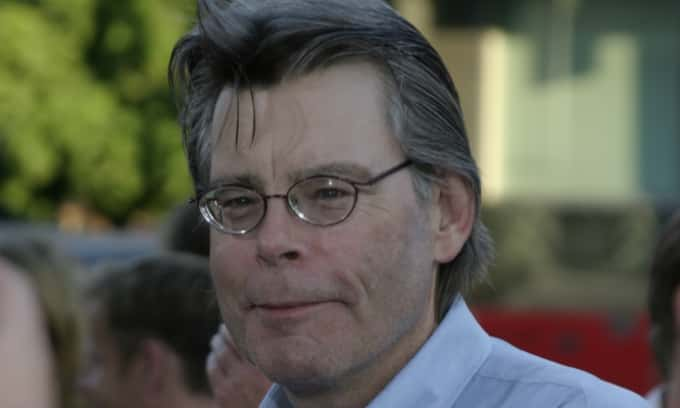 Shutterstock
Shutterstock
18. Whatever Sticks
Stanley Kubrick spent much of his time after his movie Barry Lyndon came out reading contemporary literature in search of his next project. He hated much of what he read, whipping the books against the wall when he was done with them. But his assistant can remember when he was reading The Shining, because even after a few hours she had yet to hear book hit wall, which meant he liked it.
 Wikipedia
Wikipedia
19. Into The Funnybooks
King is known mostly for penning thrillers, horrors, and mysteries, but he has a soft spot for comic books. He has written a number of back-up stories for American Vampires by Scott Snyder and Rafael Albuquerque. King has also overseen the creation of illustrated novels based on some of his works including The Stand and The Dark Tower.
20. Closer To The Heart
With over 50 published novels and a number of short story collections, King has written a lot of books. However, he has no trouble picking his favorite. That title goes to the politically-tinged vampire novel Salem’s Lot from 1975.
21. Shared Universe
King’s novel It, which has had two successful onscreen adaptations, shares a universe with The Dark Tower series, which has also recently received the big screen treatment. Sounds like a crossover potential, if you ask me!
 Shutterstock
Shutterstock
22. I See Trees Of Green
In the final battle scene of the mini-series adaptation of It from 1990, the color green appears frequently. This use of green is associated with the end of life. King thinks the color signifies the end of life, possibly a perspective acquired through his fascination with H.P. Lovecraft's work.
 It, 1990, Warner Bros
It, 1990, Warner Bros
23. A Clown By Any Other Name
Pennywise, the horrible clown that haunts the kids in It, almost wasn’t a clown at all. Originally, King shaped the book around "Three Billy Goats Gruff" tale, envisioning the Losers Club as the goats, the town of Derry as the bridge, and Pennywise as the sinister creature lurking beneath. Eventually, he decided that kids hated clowns more than trolls, which is probably true, and he made the switch.
24. Did I Write That?
In his memoir, On Writing, King shares his challenges with harmful habits, notably stating that he composed the famous novel Cujo, which later became a well-known movie of the same name, during an intense period of uncontrolled behavior. It was so bad that he still maintains that he doesn't remember writing a single word of the classic book.
25. Real-Life Horror
In the show Castle Rock, some disturbing events have occurred within the walls of Shawshank State Penitentiary. Some of the incarceration scenes in the show were actually filmed in a location that has its own share of genuine horrors - the West Virginia State Penitentiary in Moundsville. The facility once accommodated 2,400 violent criminals. 85 executions have occurred there, alongside instances of serious misconduct and suicides. The 142-year-old penitentiary is considered to be one of the most haunted sites in the state of West Virginia.
26. Not Cool In 2017… Or 1990…
The movie It terrified audiences, yet most fans are unfamiliar with a scene deemed too unsettling for the film: a perverse intimate occurrence where the group of kids, known as the Losers' Club, participate in group activities of an adult nature. For valid reason, children engaging in intimacy is sure to attract controversy, which I likely why the scene was omitted from both the 1990 and 2017 onscreen adaptations.
Commenting on the scene, Stephen said, "I wasn't really focusing on the intimate aspect of it". The book dealt with childhood and adulthood –1958 and Grown Ups. The grown-ups don’t remember their childhood. None of us remember what we did as children–we think we do, but we don’t remember it as it really happened. Intuitively, the Losers knew they had to be together again. The intimate act bridged the gap between childhood and adulthood. It’s another version of the glass tunnel that connects the children’s library and the adult library. Times have changed since I wrote that scene and there is now more sensitivity to those issues".
He later added, "It's intriguing to me that there has been so much discussion about that solitary intimate scene and so little about the multiple child murders". That must mean something, but I’m not sure what".





